Lang Studio (랑 스튜디오)
13.2Km 2024-08-01
37 , Gaesil 1-gil, Goryeong-gun, Gyeongsangbuk-do
+82-54-956-4022, +82-10-3207-4022
Rang Studio is a white-painted hanok guesthouse in Gaesil Village, Goryeong, Gyeongsangbuk-do - hometown of the descendants of Joseon scholar Kim Jong-jik. The guestroom is equipped with a bathroom plus a kitchen with cooking utensils provided. Therfe is an outdoor barbecue, but visitors should bring their own charcoal. In the village, visitors can experience the atmosphere of the old countryside, sampling traditional farming and craft skills plus traditional pastimes and food.
Ungidaek House (인심좋은웅기댁)
13.2Km 2024-08-01
32 , Gaesil 1-gil, Goryeong-gun, Gyeongsangbuk-do
+82-54-956-4022, +82-10-3207-4022
Generous Unggi House is a clay-walled hanok guest house in Gaesil Village, Gyeongsangbuk-do - hometown of the descendants of Joseon scholar Kim Jong-jik. Guest rooms have toilets and cooking facilities. Behind the house rises Hwagae Mountain, Jeomubong Peak and a 350-year-old bamboo forest. Visitors can experience traditional farming (planting rice and digging sweet potatoes) and traditional craft skills such as kite making and straw weaving; as well as making taffy and sweet rice cake, catching mudfish and ice sledding.
Yeonpung Gotaek (연풍고택(문충고가))
13.3Km 2024-08-01
44 , Gaesil 1-gil, Goryeong-gun, Gyeongsangbuk-do
+82-54-956-4022, +82-10-3207-4022
Yeonpung Old House is a 150-year-old house in Gaesil Village, Goryeong, Gyeongsangbuk-do - hometown of the descendants of Joseon scholar Kim Jong-jik. Behind the house stands a bamboo forest, making the air fresh and clean. There are four guestrooms, two of which - Juksil and Maesil (‘Bamboo’ and ‘Plum’) - are larger and suitable for groups. The kitchen is in a separate building, and has a large yard with barbecue facilities, which is also used for village feasts. In the village, visitors can experience the atmosphere of the old countryside, sampling traditional farming and craft skills plus traditional pastimes and food.
Chuwoojae House (추우재)
13.3Km 2024-08-05
20-1 , Gaesil 2-gil, Goryeong-gun, Gyeongsangbuk-do
+82-54-956-4022, +82-10-3207-4022
Chuwoojae is a hanok stay in the middle of Gaesil Village, Gyeongsangbuk-do - hometown of the descendants of Joseon scholar Kim Jong-jik. There are two buildings in the hanok - a main building and a sarangchae (men’s room) - which can be booked separately; both are equipped with toilet, bathroom and kitchen facilities. The main building contains a traditional ondol furnace room which residents can see at work. There is a parking space not far from the accommodation.
Hapcheonho Lake (합천호)
13.5Km 2023-12-22
Area of Hapcheonhoban-ro, Hapcheon-gun, Gyeongsangnam-do
Hapcheon Dam, located about 16 kilometers southwest of Hapcheon-eup, was completed in December 1988. It can hold 790 million tons of water and produce 234 million kilowatts annually. The lakeside road that runs from Hapcheon to Geochang after passing the dam is a romantic driving course reminiscent of Chuncheonho Lake or Chungjuho Lake, and the clean and clear lake with its beautiful surrounding scenery captivates vacationers on the road. It's a great place to enjoy a lakeside drive when the cherry blossoms bloom in early April.
Bugeomaeul (북어마을)
13.6Km 2023-12-22
34 Hoeyanggwangwangdanji-gil, Hapcheon-gun, Gyeongsangnam-do
Bugeomaeul is a bugeo jjim (braised dried pollack) restaurant located within Hapcheonho Hoeyang Tourist Resort, where visitors can get enjoy the best view of the lake. People often enjoy dried pollack as a braised dish in Korea. It is rich in protein and amino acids, known to prevent aging and improve liver function. Above all, it is an excellent detox food, and Koreans often eat bugeo jjim as a hangover food. Bugeomaeul uses their original sauce and recipe for a mouthwatering dish. The restaurant also has after-meal add-on options like noodles, which can be mixed with the remaining sauce for a more filling meal. The restaurant is located right in front of Hapcheonho Lake, allowing visitors to enjoy the meal comfortably with a pleasant sight in view.
Odosan Healing Forest (오도산 치유의 숲)
14.3Km 2025-10-23
398, Odosanhyuyang-ro, Bongsan-myeon, Hapcheon-gun, Gyeongsangnam-do
+82-55-930-3742
Odosan Healing Forest is nestled at the foot of the tall Odosan Mountain (1,133 meters above sea level) in Hapcheon. The mountain spans the areas covering Gajo-myeon in Geochang-gun, Gyeongsangnam-do and Myosan-myeon and Bongsan-myeon in Hapcheon-gun, Gyeongsangnam-do. Odosan is at the end of the Gayasan Mountain Range along with Dumusan Mountain (1,039 meters above sea level), which is situated 2 kilometers to the northeast. North of Odosan Healing Forest, you will find Haeinsa Temple, home to the Tripitaka Koreana and one of the three major temples in Korea, as well as Gayasan Mountain, and Maehwasan Mountain. Hapcheonho Lake is south of the forest, so there are several tourist destinations in the area and the natural landscape is superb. The azaleas and royal azaleas are in full bloom in spring; cool valley waters can be enjoyed in summer; and the mountain's colorful fall foliage is as beautiful as that of Naejangsan Mountain, a renowned spot to enjoy autumn colors. You can enjoy mountain climbing along the valley surrounded by thick forests. It is said that Doseon, a well-known monk from the late Silla Dynasty, was fascinated by the energy and beauty of Odosan Mountain and practiced asceticism there.
Enjoying the Odosan Recreational Forest
Convenient facilities unfold along the valley within the Odosan Recreational Forest, such as the visitor information center, forest cabins, a communal kitchen, camp decks, campsites, etc. Notably, the hiking trail behind the forest cabins follows the clear stream that flows year-round, leading to Sukseongsan Peak, a small peak on the slope of Odosan Mountain. The trail overlooks Hapcheonho Lake and offers hikers a beautiful view. Odosan Recreational Forest consists of dense natural forests filled with pine and oak trees that are 20 to 50 years old. Also, a variety of vegetation, including the wild cherry, crimson glory vine (called meoru in Korea), and kiwiberry vine (called darae in Korea), as well as herbaceous plants can be found here. This makes it an ideal site for students, including teenagers, to learn about nature.
Hapcheon Okgyeseowon Confucian Academy (옥계서원(합천))
15.0Km 2021-03-17
3078-13, Seobu-ro, Hapcheon-gun, Gyeongsangnam-do
+82-55-930-3178
Hapcheon Okgyeseowon Confucian Academy was built to store Yulgok Yi I's writings, "Gyeokmongyogyeol" and "Haedongyeonwonnok." Okgyeseowon was originally founded approximately 4 kilometers away from Hyangok-dong on the third year of Yeongjo's reign (1725) before it was closed due to the seowon abolishment policy by Heungseon Daewongun. On the sixth year of King Gojong’s reign, it was re-built about 200 meters away from the east side of the village. The academy is composed of a lecture hall, Sowonsa, Naesammun, Oesammun, Gwallisa and more.
Ilbungsa Temple (일붕사(의령))
15.2Km 2024-02-28
1180-42 Cheongjeong-ro, Gungnyu-myeon, Uiryeong-gun, Gyeongsangnam-do
Situated at the base of Bonghwangsan Mountain in Uiryeong, Ilbungsa Temple is renowned for being the world's largest cave temple, a distinction recognized by the Guinness World Records. It features two cave temples, including the Daeungjeon Hall Grotto and Muryangsujeon Grotto. A sought-after destination for those seeking the fulfillment of their wishes through prayer, Ilbungsa Temple is surrounded by other attractions including the Byeokgye Tourist Complex, Chalbigyegok Valley, and Bonghwangdae Cliff.
Byeokgyegyegok (Chalbi) Valley (벽계(찰비)계곡)
15.3Km 2021-02-20
201, Byeokgye-ro, Uiryeong-gun, Gyeongsangnam-do
+82-55-570-4958
Byeokgyegyegok Valley in Uiryeong, Gyeongnam region begins at Jagulsan Mountain and runs down along Hanusan Mountain, showcasing deep valleys and interesting rock formations. Also called Chalbigyegok Valley, the valley has clean water flowing all year round. The valley’s stream from the waterfall creates big and small ponds along its way, most famous among which are Gaksiso and Nongso ponds.
The biggest draw of this attraction is the crystal clear pond waters that are clean enough to reflect the surrounding forest like a natural mirror. Byeokgye Tourist Site and Byeokgye Reservoir located near the tail-end of the valley are growing into full-fledged tourist attractions for camping and fishing.
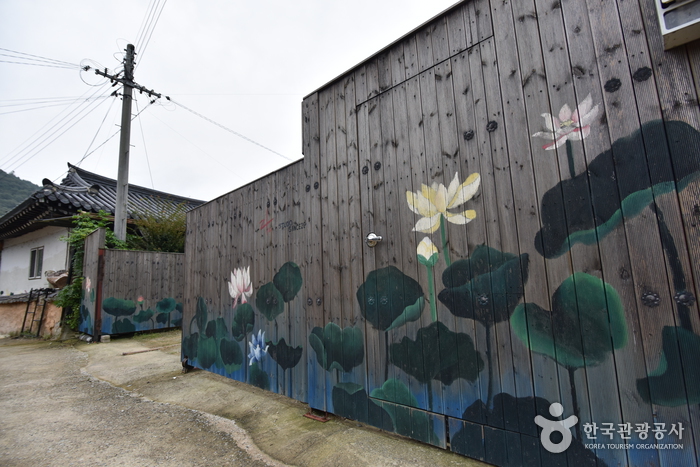
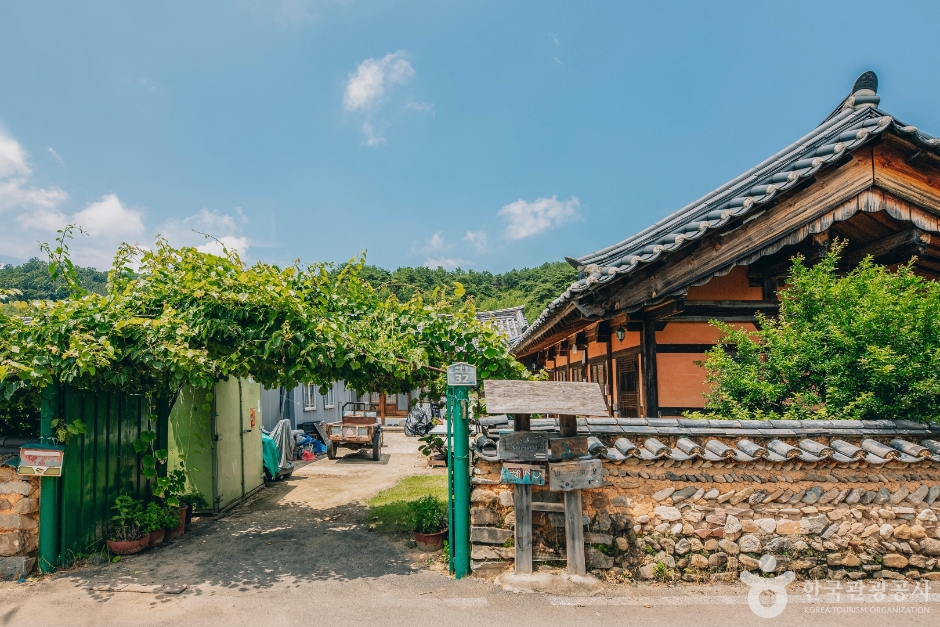
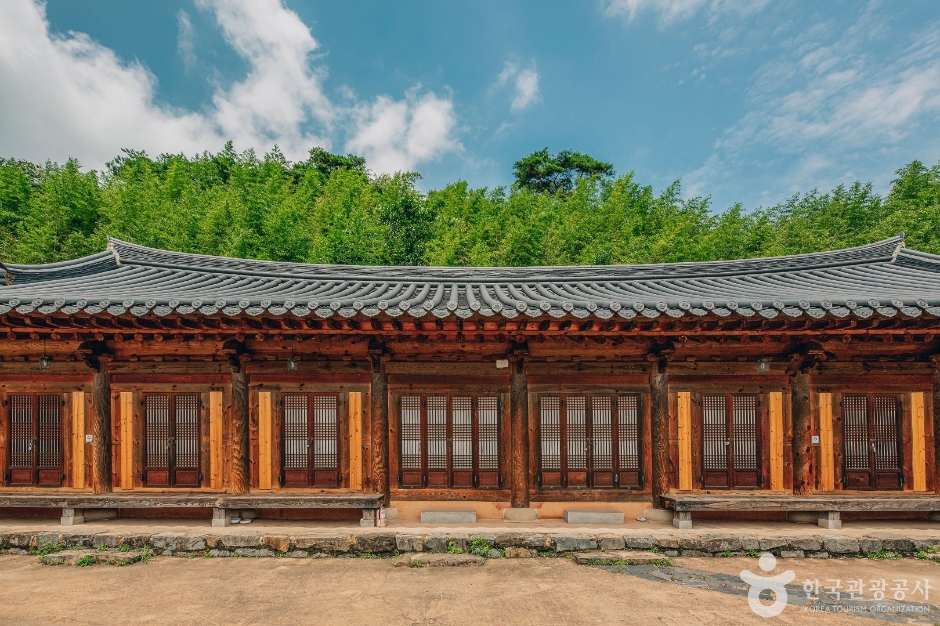
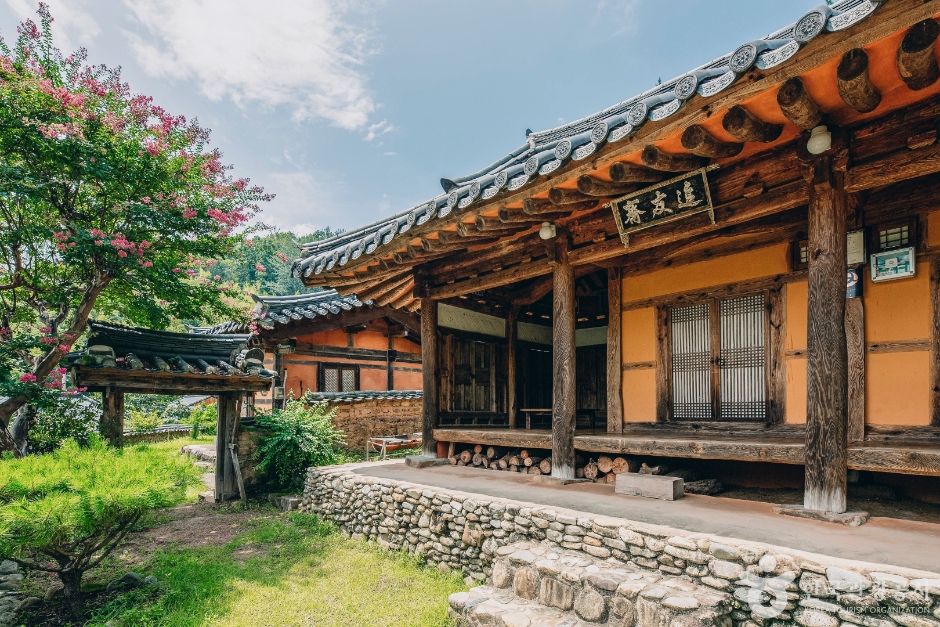
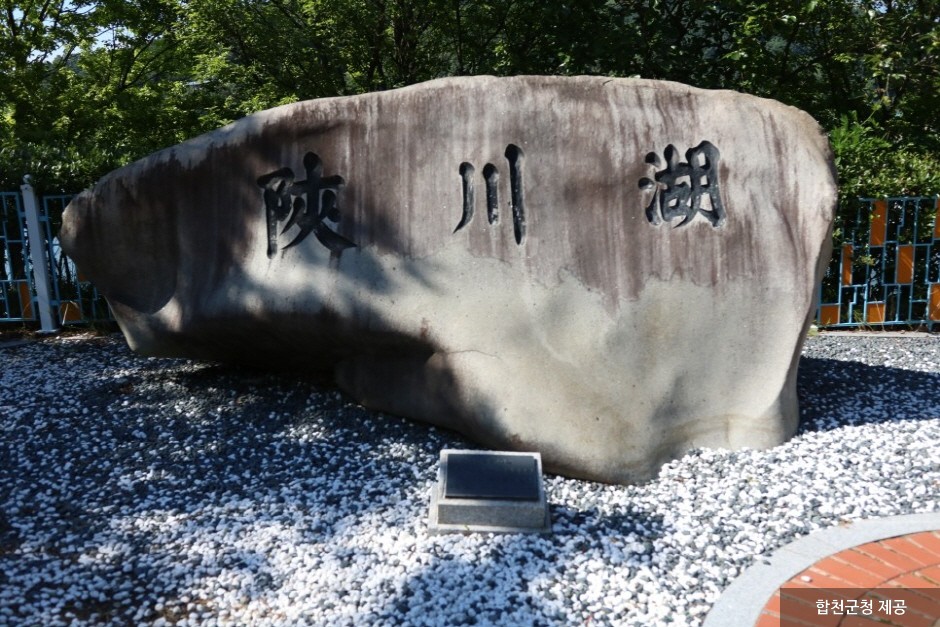
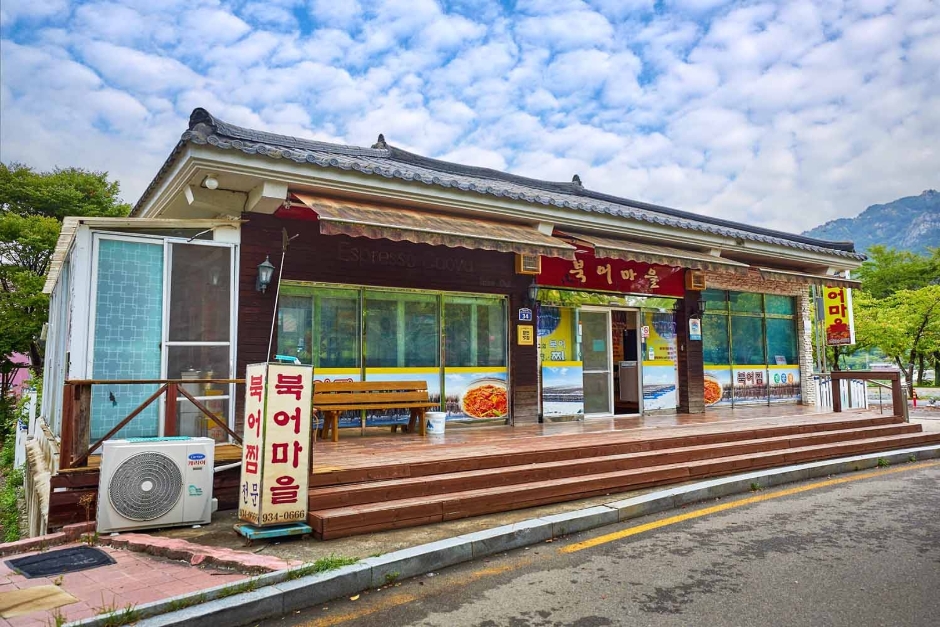

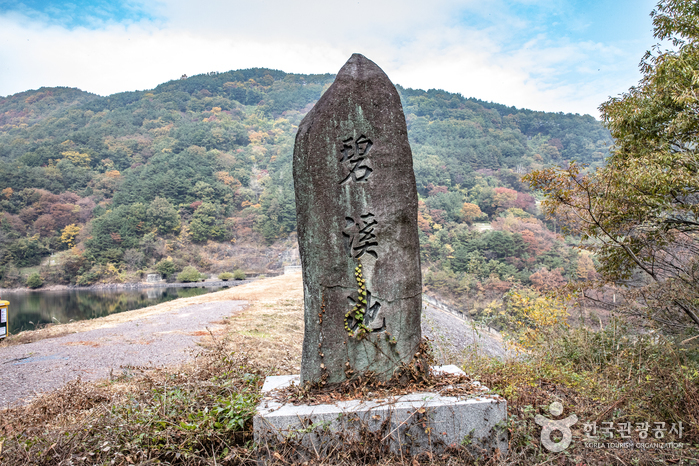
 English
English
 한국어
한국어 日本語
日本語 中文(简体)
中文(简体) Deutsch
Deutsch Français
Français Español
Español Русский
Русский